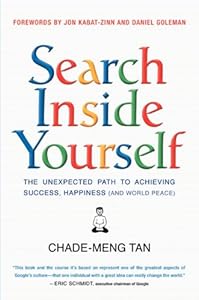Google engineer, Chade-Meng Tan, offers a simple technique, based Buddhist mindfulness meditation principles, that provides a way to effectively respond to these “triggers” rather than react to them. In his book, Search Inside Yourself: The Unexpected Path to Achieving Success, Happiness (And World Peace), Meng offers a practice he calls the “Siberian North Railroad.” This practice, according to Meng, “is useful for dealing with triggers, but also for other situations in which we need to deal with negative or distressing emotions.” The practice has five steps:
1. Stop
2. Breathe
3. Notice
4. Reflect
5. Respond
Notice that the title “Siberian North Railroad” is a mnemonic device to remember the first letter of the words in each of the five steps (SBNRR). Here's how each of these 5 steps work:
Stop: According to Meng, when you “feel triggered” you just stop. You pause without doing anything. This is the most important step because it allows you to engage in the other steps. As Meng points out, in Buddhism, this is called the “sacred pause."
Breathe: In this step, focus the mind on the breath for a few minutes. Take several deep, conscious breaths, calming yourself. When your mind tries to slip back to the anger or strong emotion, redirect it back toward your breath.
Notice: After focusing on the breath, then “notice” by closely examining the emotion. Look at what it feels like in your whole body. Notice how the emotion is affecting all parts of your body. The goal is to experience the emotion physiologically and not as something separate from your body. For example, as Meng suggests, your observation is not “I am angry” but “I experience anger in my body.” This is where you try to experience what the emotion is doing to you inside and out.
Reflect: In this step, Meng says to ask the question, “Where is this emotion coming from?” Is it due something in my personal history? Is it due to some perceived personal inadequacy? This step is all about gaining a perspective of the emotion objectively from the outside. You put yourself in the other person’s shoes. You also remind yourself that all people just want to be happy and that this person is only acting this way because they perceive it will make them happy. This is important: bring perspective to your emotion without judging it right or wrong.
Respond: In this step, you finally respond. As Meng points out, you first bring to mind ways in which you could respond that bring about a positive outcome in the situation. Imagine what a positive response would look like. You may or may not actually have to carry out that response. Just remember, the goal here is to defuse the trigger before you make a bad situation worse.
SBNRR is a strategy, if practiced over time, breaks down our learned pattern of reacting to those strong emotional triggers, and installs a new, more effective way of responding. As we repeat this practice even with those strong emotional events that have occurred in the past, we begin to see that we can relearn how we respond to others in the most trying situations.
What I personally like about the Siberian North Railroad Strategy is that it actually provides a specific way to respond in those situations when someone has triggered strong emotions. It is a powerful exercise in emotional intelligence that can give schools leaders, teachers, and even students a tool to use in the sometimes highly-charged emotional environment we call school. Leadership is very much about being able to deal with our own emotional triggers effectively, and this strategy gives us the means to do just that.

Note: Chade-Meng Tan's book Search Inside Yourself: The Unexpected Path to Achieving Success, Happiness (And World Peace) is based on a course in emotional intelligence taught at Google. You will find countless other strategies in this book for dealing with interpersonal and intrapersonal issues. Meng's straightforward, humorous style makes the book a pleasant read too.
No comments:
Post a Comment